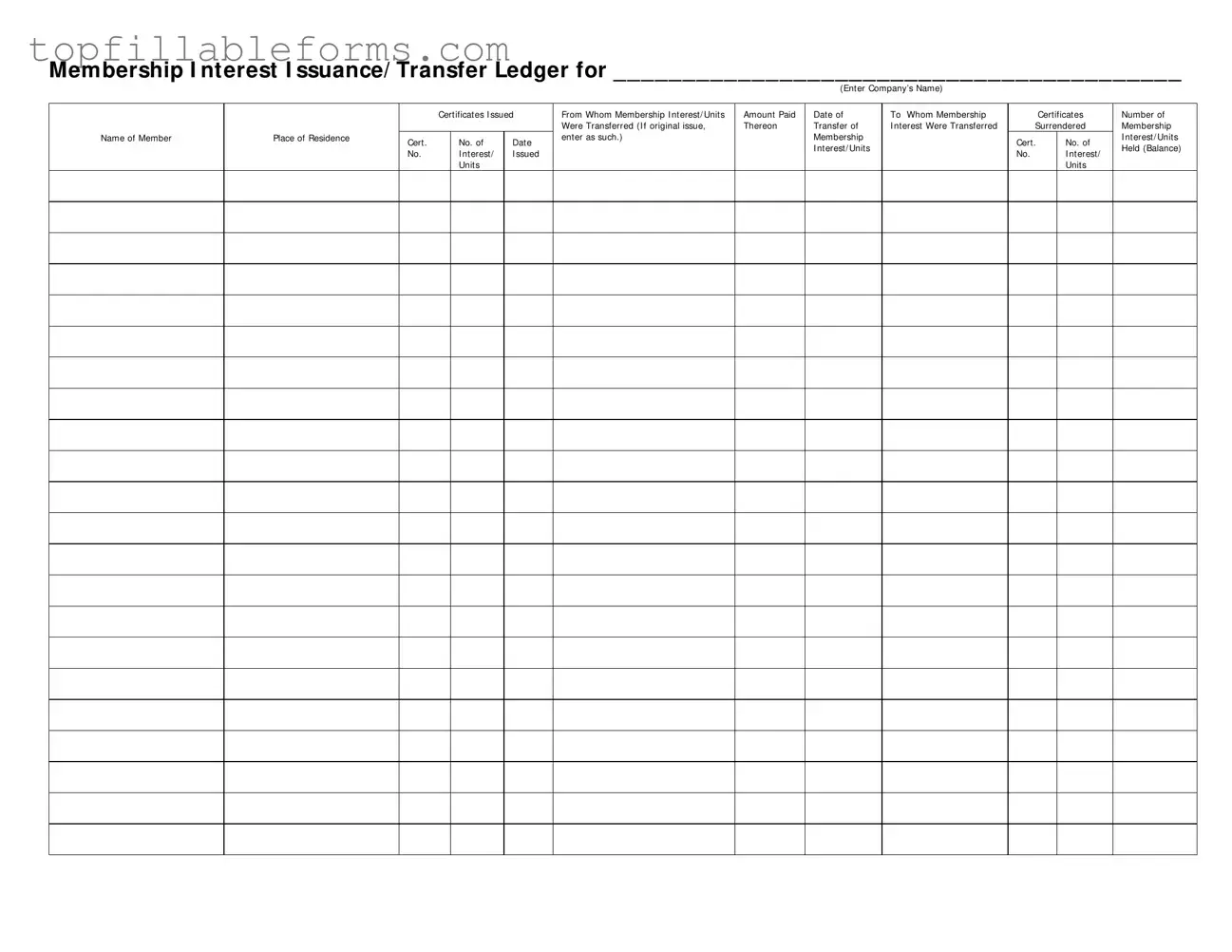Printable Membership Ledger Form in PDF
The Membership Ledger form serves as a crucial document for tracking the issuance and transfer of membership interests within a company. It meticulously records details such as the names of members, the certificates issued, and the amounts paid, ensuring transparency and accountability. By maintaining this ledger, organizations can effectively manage their membership interests and facilitate smooth transitions of ownership.
Open Membership Ledger Editor Here

